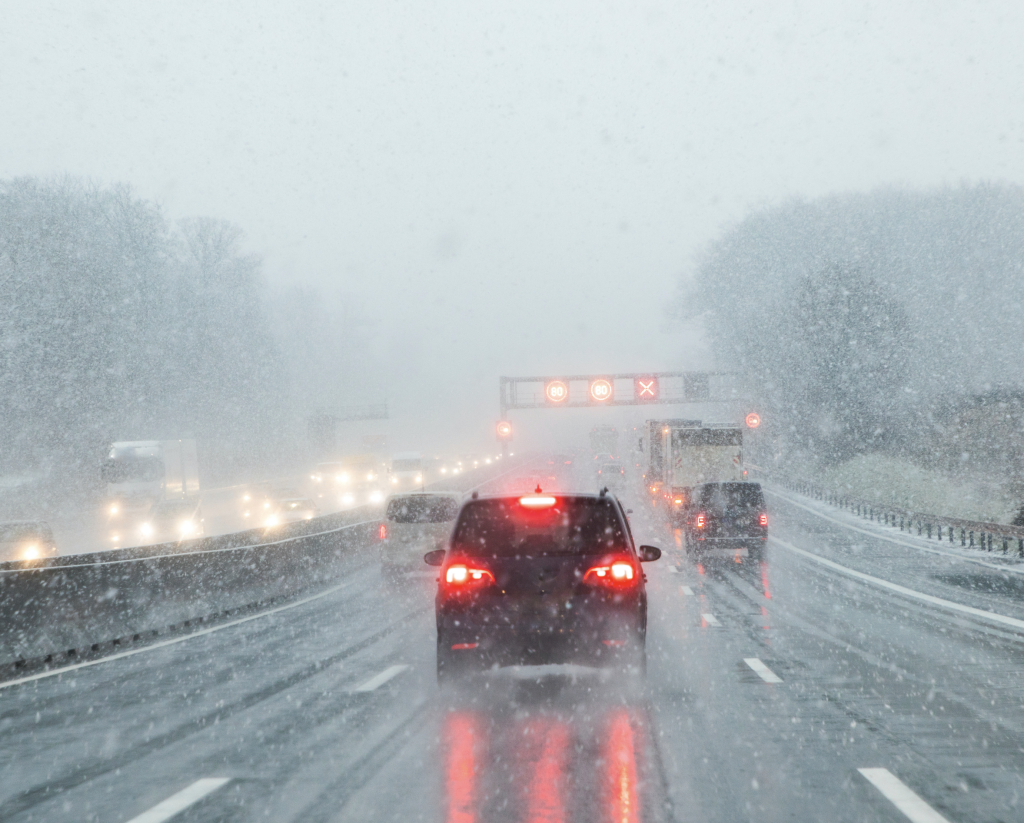
Making sure you make it from point A to point B safely is the utmost importance when a winter storm rolls in. Unfortunately, we can only know how the road conditions will be until we’re already on the road. That’s why it important to know how to drive in serval winter conditions. That’s why this week I want to help prepare you for the winter months ahead of us, and for any long distance traveling you might be doing in the next couple of weeks for the holidays. If you are traveling for the holiday, you are not the only one. In fact, Christmas is one of the most traveled holidays, and if you are hitting the road to get to your destination you might hit that dread snow. If this is the case we want to help prepare you and make sure that you make it to your destination safely and stress-free. The best way to do that is learning some tips and tricks for taking on any all weather conditions you might run into. Before you hit the road it is extremely important that your vehicle is in tip-top shape and able to make it through the winter weather you might hit. If you think your vehicle might need to be serviced before you hit the road, bring it into our state of the art service center and our professionals would love to help you out!

Driving In The Snow:
- Snow can fall in different ways actually causing different driving issues
- Large, wet snowflakes can pile up quickly and cause slippery road surfaces.
- Small, light snowflakes can obscure visibility and build ice on windshields and other surfaces.
- In order to make it to your destination safely, we suggest driving slow. If this means leaving early, plan accordingly. It is better to wake up early and be safe then run late and get hurt.
- Secondly, we suggest increasing your following distance. Even in light snow, braking ability can be severely impaired. Your vehicle can take up to double the distance to stop in snow compared to dry conditions.
- We also suggest driving with your lights on, making yourself visible is important to both your own safety and other drivers.
Driving On Ice:
- Icy conditions can be treacherous, and black ice can be our worst nightmare. The prime times for black ice to occur are at dawn and late evening when temperatures are coolest. Black ice can form when the air is at 32 degrees or below at the surface and rain is falling
- Driving on ice can become very slippery because tires have nothing to grip to. The best way to avoid sliding is to drive very slow and keep an eye on the road! If you find yourself sliding on ice remember these tips
- Don’t panic.
- Don’t slam on the brakes.
- Take your foot off the gas.
- Steer your car in the direction you want to go.
- Wait for the car to slow down and the wheels to catch so you can regain control.
- Make sure that you give other drivers plenty of space in case they cannot come to a controlled stop.


![[Facebook]](https://www.gofiorevw.com/blogs/971/wp-content/plugins/bookmarkify/facebook.png)
![[LinkedIn]](https://www.gofiorevw.com/blogs/971/wp-content/plugins/bookmarkify/linkedin.png)
![[Twitter]](https://www.gofiorevw.com/blogs/971/wp-content/plugins/bookmarkify/twitter.png)
![[Yahoo!]](https://www.gofiorevw.com/blogs/971/wp-content/plugins/bookmarkify/yahoo.png)
![[Email]](https://www.gofiorevw.com/blogs/971/wp-content/plugins/bookmarkify/email.png)


